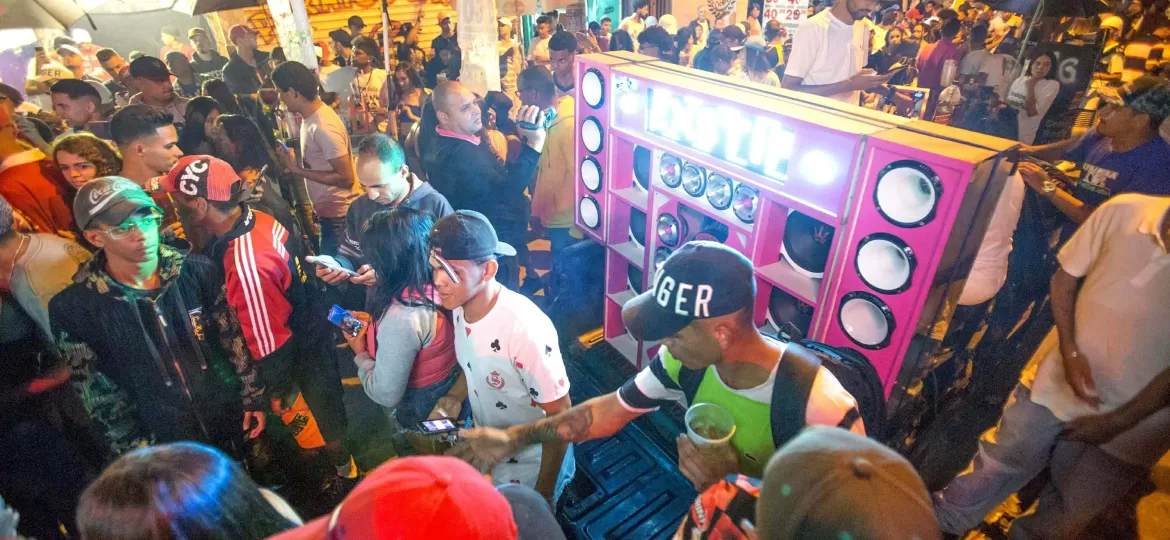
For a long time, funk was seen as noise. The noise of the favela. Of the body. Of the deep Brazil that dances, twerks, and survives. But what happens when this sound crosses the Atlantic, enters institutions like Harvard, and becomes a living epistemology?
And it’s not just us saying it. Reports, articles, and cultural funding programs show: funk has expanded beyond Brazil’s alleys and sonic labyrinths, reaching the world and being legitimized as a field of research, pedagogy, and identity.
Like so many popular manifestations in Brazil, funk was (and still is) criminalized before it was legitimized. But that never stopped its momentum. Today, collectives, researchers, MCs, and educators are working to document, protect, and reinvent this culture.
“Funk has two roots: one social and one musical.” This is how Thiagson de Souza, classical music professor, PhD in Funk from USP, and the first musician to write a book on Funk, begins his explanation of the genre’s origin—a sound that, before becoming a global symbol, was and still is a form of resistance. “Its musical root comes from hip-hop culture. And as part of hip-hop, it has always been electronic music. But the social root traces back to Black dance parties, where soul, American funk, James Brown, Sly Stone were played…”
Raised within this culture, Thiagson saw funk not only as an artistic expression but as a possible academic path after years dedicated to classical music. “This topic was necessary—for the university, for society, and for me,” he says. That’s how he turned funk into his life’s mission.
“All of this is part of the musical empowerment of Black culture,” he explains. “Hip-hop, with its racial consciousness, inherits the energy of American Black Music. Brazilian funk emerges from this intersection, in dialogue with LA’s electro funk, Miami Bass, and especially the Volt Mix beat—widely used here, even though it originated in LA. It’s interesting: while Miami Bass is often cited as the main reference, one of our funk’s most iconic foundations actually comes from elsewhere in the U.S.”
In the 1970s and 1980s, Rio’s Black dance parties pulsed with these sounds, laying the groundwork for what would become funk carioca. As he explains, Miami Bass—a genre that exploded in Florida during the ‘80s—directly influenced Brazilian funk. Its electronic, intense, and repetitive beats made funk an energetic, danceable, and contagious rhythm.
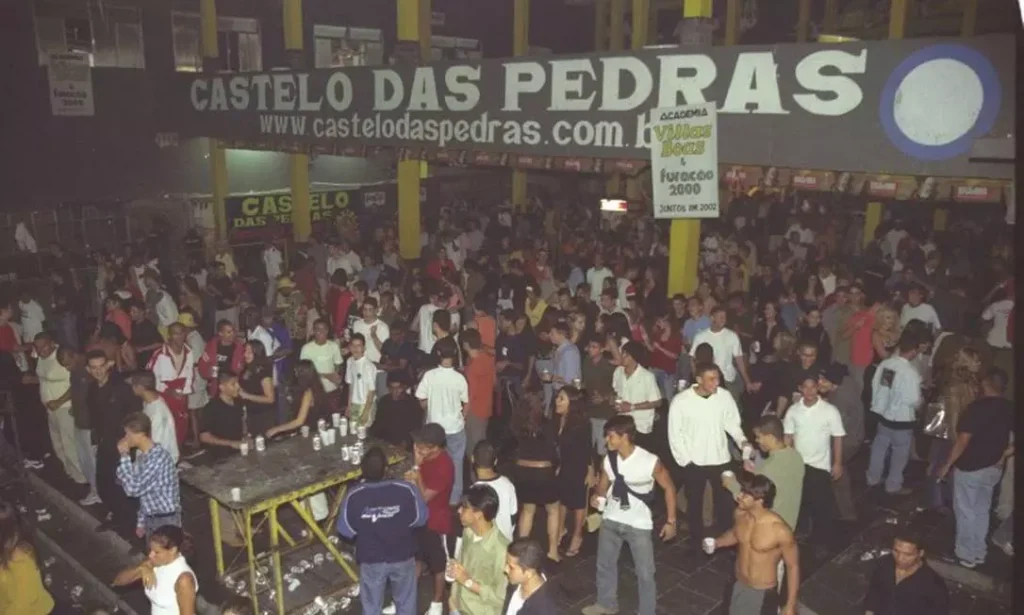

The 1990s marked a turning point: the definitive Brazilianization of the sound. With the arrival of the first funk records produced in Brazil, the genre’s identity began to take shape. “The first Brazilian-produced records came out in 1989. DJ Marlboro is usually credited as the pioneer with his album Funk Brasil Volume 1, but there was also a record released soon after by Grama Master and Rafael Super Quente. These albums marked the beginning of funk production in Brazil.”
Still, Thiagson points out that these albums weren’t the actual birth of funk in the country, but rather the formalization of a scene that already existed in the dance halls. “There was already a whole funk dance scene before that. These records just made the genre’s production official.”
At first, the dance parties were middle-class events, taking place in neighborhoods like Botafogo, in Rio de Janeiro’s South Zone. But over time, this culture moved toward the outskirts.
“The first major dance party was Baile da Pesada, in Botafogo. It was a middle and upper-middle-class event. But over time, those parties lost space, and the culture moved to the suburbs.”
Funk’s migration to the favelas also marked the beginning of its criminalization. The elite and the media began associating the genre with drug trafficking and violence, attempting to delegitimize it as a form of expression. Thiagson sees this as a historical pattern. “We can draw a parallel with samba, for example. Samba was stereotyped as ‘malandro music,’ faced police persecution, and was only accepted when the upper classes started consuming it.”
According to him, this cycle of marginalization followed by acceptance repeats with many popular cultural expressions, and funk is no exception. “Racism evolves. There was a moment in history when funk became the target. Before that, it was samba. Next, it’ll be something else.”
Funk’s criminalization is a central theme in the genre’s trajectory, especially in the 1990s—as analyzed by Juliana Bragança, one of the founders of Domina Funk, in her book “Preso na Gaiola: the criminalization of Funk Carioca in Jornal do Brasil (1990–1999)”. Yet criminalization isn’t just a thing of the past. Despite funk’s increased visibility and cultural relevance, it still faces repression. As she points out, resistance remains key:
“In Preso na Gaiola, which is based on my master’s thesis, I analyze the criminalization of funk and how it unfolded in the ‘90s. But this debate is still essential today because funk continues to be criminalized in many ways. What matters most is that we continue resisting. When we talk about Domina, when we put it into action, when we demand public investment, we’re resisting. And going back to what I said earlier: we are also funk.”
— Juliana Bragança, PhD candidate in Social History and co-founder of Domina Funk
It was from the 2000s onward that funk solidified itself as one of Brazil’s biggest musical phenomena.
Thiagson’s relationship with academia reflects not just musical resistance, but intellectual resistance too. During his college years, he faced the challenge of researching a genre so marginalized within a traditionally elitist academic environment. He recalls the subtle prejudice he faced: “My academic work was never outright rejected, but I do notice the bias. I get invited to give talks often, but always from outside the music field. I’m a musician who speaks about social issues, but my foundation is musical.”
For him, the biggest challenge was proving that funk shouldn’t be viewed only through a technical lens, but as a cultural, political, and racial expression. “Academia has always approached funk technically. But what it failed to understand was the social and political context it carries.”
Women in Funk
Listening to the women who live funk, who are part of it—not just those who speak about it from the outside—is a crucial step in understanding the depth of this cultural scene. Domina Funk emerges within this context: a space where three Black women researchers speak and act with authority on issues related to the development of funk and its cultural dimensions, without a distant gaze. While the name Domina Funk might suggest an idea of “domination,” it actually reflects the desire to occupy and uplift every aspect of this culture. Domina Funk aims to create meaningful connections between public/private institutions and the funk movement in order to generate both market value and sociocultural impact. Its focus lies in elevating the funk movement to strengthen its role within the country’s creative economy ecosystem.
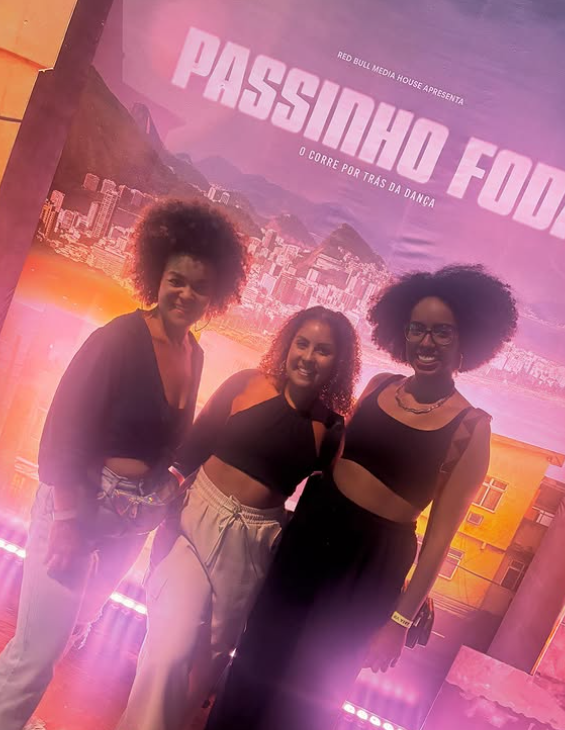
“Even before Domina Funk became an official company, we already had this vision of expansion—of being present in various spaces to defend funk. The word ‘domination’ doesn’t come from a place of control, but from the desire to be present, to support and value the funk movement in all its dimensions,” explains Juliana Bragança, one of the founders of Domina Funk, alongside Tamiris Coutinho, author of the book Cai de Boca No Meu Bc3t@o: Funk as a Force for Female Empowerment*, and Ludmylla Gonçalves, an anti-racist education researcher—both also co-founders.
“Women have always been major builders of the funk movement. This is not a recent phenomenon, and it’s something we need to acknowledge more. They were there long before most of us even understood what funk really was,” says Tamiris Coutinho. “In my research, I propose a generational breakdown to show how these women have been active since the beginning. During the Black Rio movement, for example, women were already present—long before funk became what we know today.”
When we talk about funk, the narrative is often shaped through a male lens. The bailes de corredor (corridor parties), for instance, are typically remembered through videos of fights and disputes between men—but where were the women in these moments?
This invisibility of women in funk extends beyond the early generations. Today, it’s clear that more women are becoming MCs, yet we still see very few women in prominent roles such as DJs, managers, or music producers.
“It’s a persistent reality—not just in funk, but in the music industry as a whole. The visibility of female MCs is important, but we can’t forget that behind the scenes, there are many women playing key roles who still go unnoticed,” says Tamiris Coutinho, co-founder of Domina Funk.
For women in funk, the fight goes far beyond music. They face a system that constantly objectifies them—especially when it comes to bolder performances, like funk putaria. Their resistance is not just artistic; it’s also a fight against racism, sexism, and misogyny embedded in the genre. Tamiris highlights that the courage these women show—by putting themselves out there, taking the stage, and stepping into male-dominated spaces—deserves recognition:
“The fact that they present themselves so boldly is a form of resistance—not just against objectification, but against a system that marginalizes and silences their voices.”
This distance between academia and funk—which researcher Thiagson also points out—has deep historical roots. “This practice of staying detached from the object of study still persists—I’m not sure to what extent,” says Juliana. “But I believe the real shift is this: we don’t stay distant. We are our object of research. And what we want is to transform this reality. We want to improve the situation. That’s the goal.”
Funk for the World
The power of Brazilian funk echoed across Harvard’s campus in the United States through the powerful presence of professor, researcher, and dancer Susan Santos, co-founder of Ginga Funk, a dance school based in Goiânia. Susan was one of the winners in the Culture category at the 2025 Brazil Conference — watch the full performance here — securing one of only two available spots among hundreds of applicants. Her participation marked a strong representation of Black funk culture at the event, which took place from April 11 to 13.
Susan holds a master’s degree in Social Anthropology, a teaching degree in Dance, and is currently studying Pedagogy, all at the Federal University of Goiás (UFG). She was the only Black woman and funk teacher featured in the conference lineup, which aims to discuss Brazil’s development and key challenges, while highlighting impactful work in areas such as culture, environment, education, entrepreneurship, and research.
“We made it to the local news when people found out Ginga Funk was going to Harvard, to the Brazil Conference,” Susan recalls. “And then came a wave of comments like, ‘Funk isn’t culture,’ ‘What’s this girl going there to do? Twerk and ruin Brazil’s image?’”
The Brazil Conference is held annually at Harvard University and MIT (Massachusetts Institute of Technology), with support from researchers, entrepreneurs, Brazilian consulate representatives in Boston, and political figures. Its mission is to reimagine Brazil’s future through a wide range of voices from Brazilian society — from social movements to artists, influencers to civil servants.
In her conversation with MashUp, Susan was clear: the discomfort wasn’t about the dance itself, but about who was dancing. And she leaves us with a powerful provocation worth listening to.
“Funk is often seen as a space for entertainment, partying, joy — and even sexualization. But few people understand its deep connection to the identity-building of Black people in Brazil, especially in relation to youth and our Black ancestry.”
According to Susan, funk now has an international door open — a crucial step in legitimizing the culture from the perspective of Black communities. She believes this is the time to reaffirm funk as a genuine movement rooted in the lived experiences of Black Brazilians, rather than allow it to be reduced to mere entertainment by outside narratives. “Now, more than ever, is the right time to legitimize our funk from that place,” she asserts. By bringing both her research and dancing body to Harvard, Susan broke not just geographical boundaries, but epistemological ones as well:
“It’s essential that funk be discussed as public policy. We’re talking about young Black people who attend funk parties and are murdered or persecuted. We can’t keep pretending it’s just entertainment.”
Ginga Funk is a dance school in Goiânia with multiple initiatives, including outreach projects led by Black women dancers.
Through one of these programs, the collective teaches funk and other forms of Black dance — such as hip-hop, afrobeat, and jazz dance — while preparing students for professional careers in the dance world. In addition to regular classes, Ginga Funk fosters cultural exchange by hosting groups from various countries and runs free community initiatives in the outskirts of Goiânia and neighboring cities, offering high-quality education and artistic training.
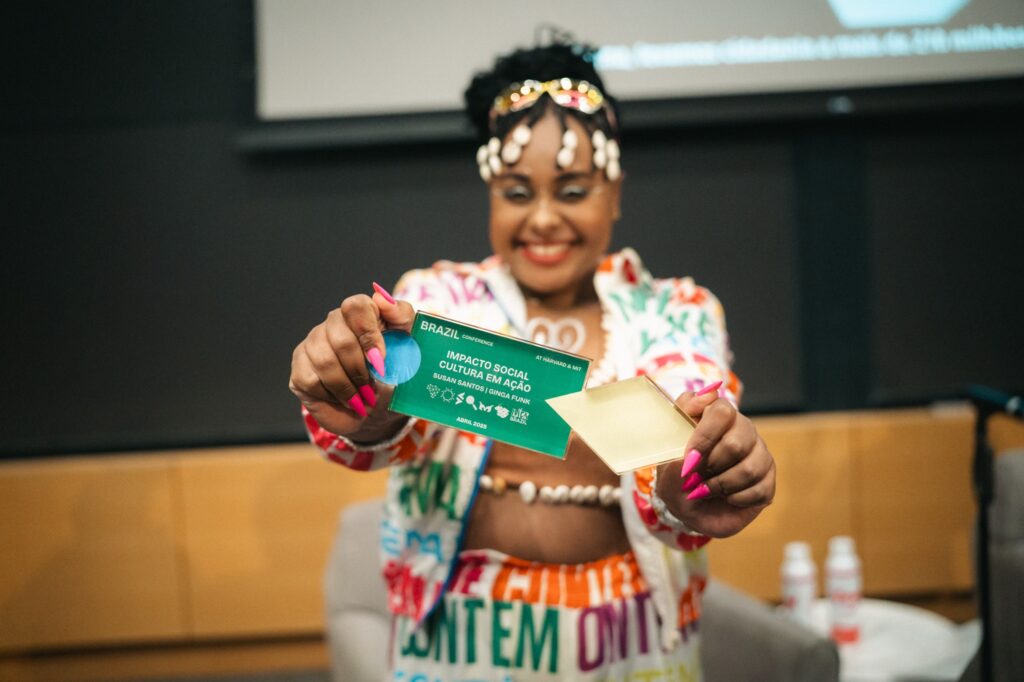
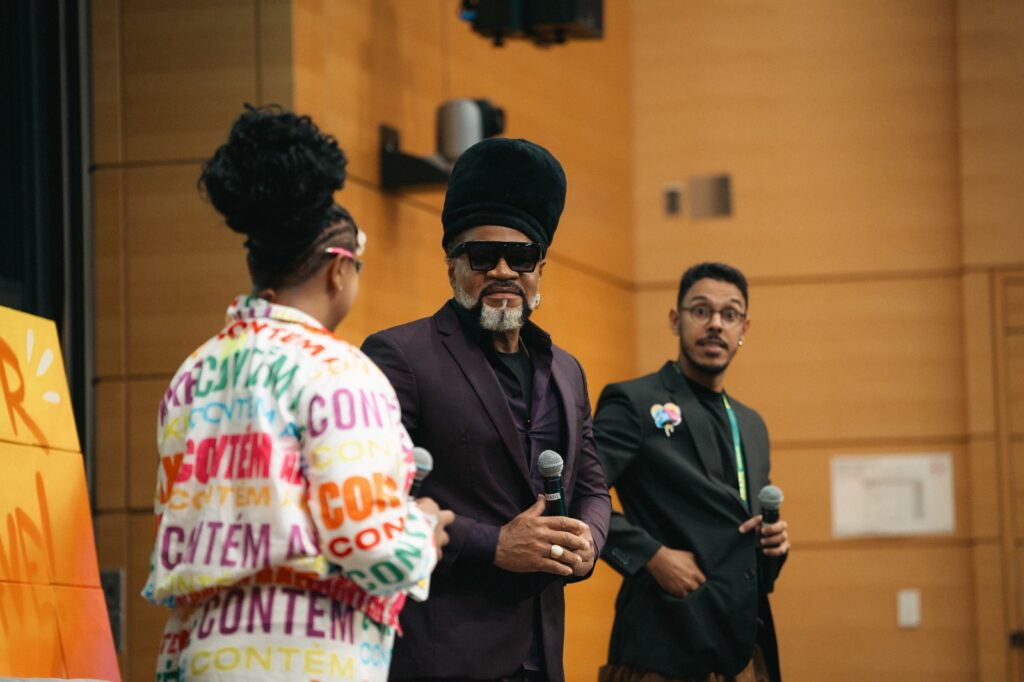
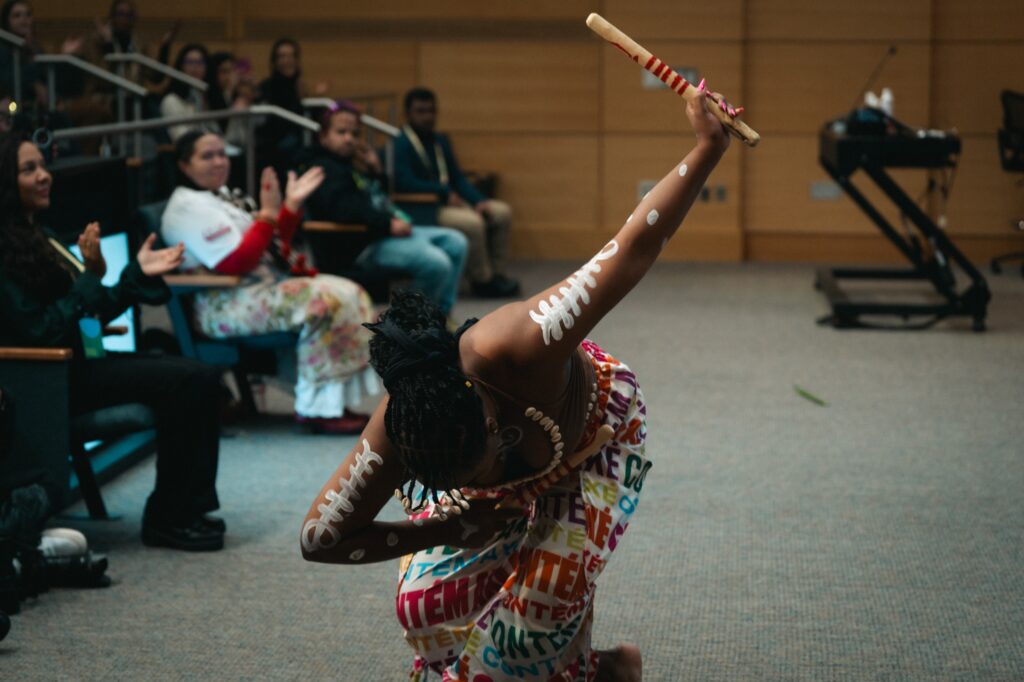

But Where Are the Public Policies?
When it comes to public policies, despite Rio de Janeiro being the birthplace of funk, Ludmylla points out:
Ludmylla also emphasizes the importance of viewing funk through a racialized lens, especially when it enters the political and cultural sphere of the Black community. She argues that racial consciousness is essential to understanding funk as a political movement: “Funk, especially in Rio, stands as a Black cultural and political movement.”
This understanding of funk as a political act is essential — particularly now, as the genre gains international visibility. On a global stage, funk is increasingly being recognized as a rich and powerful cultural expression, but it’s crucial that its analysis stays grounded in its roots as a form of Black resistance.
In 2024, funk reached new frontiers with its presence at Harvard and its expanding influence beyond music — as shown in the Netflix documentary Passinho Foda. The project shed light on the Passinho dance movement and funk’s status as intangible cultural heritage in Rio de Janeiro. Despite the visibility, dancers still face major challenges in securing broader recognition for funk culture.
“Dance involves high production costs, time, and effort, but the financial return isn’t nearly as significant. When we talk about Passinho Foda, a style of dance typical of Rio funk, we’re not seeing the kind of investment it deserves,” says Ludmylla, from Domina Funk.
Ludmylla, Juliana, and Tamiris — co-founders of Domina Funk — share the view that bringing brands into the funk movement remains a major challenge, alongside a lack of funding directed toward dancers and funk culture in Rio. Although there are laws meant to support funk, the public infrastructure and mobilization around the genre are still insufficient. The relationship with public authorities is tense, with many artists feeling ignored and silenced. One of the main strategies to strengthen the movement has been to advocate for more effective public policies — including incentives for festivals and events — to create a more supportive environment for funk’s growth, especially in Rio’s traditional bailes.
This ongoing transformation — where funk is no longer treated as mere “fun” or “noise” but as a political and educational force — is still in its early stages. Through initiatives like Ginga Funk, Domina Funk, and the research of Thiagson, funk continues to build bridges between Brazil and the world, challenging colonial and racist narratives that attempt to reduce its roots and expressions to stereotypes.
To explore further:
A Batalha do Passinho, documentary by Emílio Domingos
“Dance Funk!” (with Brazilian Sign Language interpretation)
Preso na Gaiola: a criminalização do Funk carioca nas páginas do Jornal do Brasil (1990–1999) by Juliana Gonçalves
Cai de Boca No Meu Bc3t@o: o funk como potência do empoderamento feminino* by Tamiris Coutinho